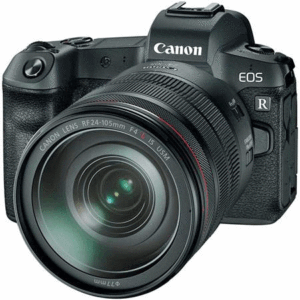While presenting its third quarter financial results in late October, Canon lowered its forecasts for its Imaging Systems business unit sales and profits – for the third time this financial year.
Camera sales for the full year are now forecast to be 475 billion yen, down 22.6 percent from last year’s figure of $595 billion yen. This, along with poor sales in inkjet printers, has hammered operating profit for the Imaging Systems group, which is forecast to be down by almost 60 percent compared to 2018, from 127 billion yen to just 51 billion yen.
 According to the financial presentation commentary: ‘Sales for the combined first nine months of the year totaled 570 billion yen, a year-on-year decrease of 16.5 percent, while income before income taxes totaled 29 billion yen, a year-on-year decrease of 67.3 percent.’
According to the financial presentation commentary: ‘Sales for the combined first nine months of the year totaled 570 billion yen, a year-on-year decrease of 16.5 percent, while income before income taxes totaled 29 billion yen, a year-on-year decrease of 67.3 percent.’
Sales of interchangeable lens cameras decreased 7 percent in the third quarter – attributed mainly to market contraction for entry-level DSLRs. Canon was able to point to one bright spot – mirrorless interchangeables, where it did experience unit sales growth. As a consequence there will be a ‘redistribution of resources’ to mirrorless, which begs questions about continued support and development of professional DSLRs: ‘We are focusing on redistributing resource to mirrorless cameras, where we are steadily increasing sales by enhancing our lineup of cameras and lenses.’

Canon conceded that the Canon R/RF full-frame mirrorless cameras it introduced at the end of last year have so far been less successful than it anticipated: ‘…Price competition surrounding higher-end full-frame models intensified due to the energy that each manufacturer is putting into this segment. In this kind of environment, and due to our stance to prioritize profitability, we posted third-quarter unit sales of higher-end models that were below our plan.’
And there’s an indirect concession in the financial commentary that the Canon R/RF camera launch perhaps needed to include a few more compatible (and affordable) lenses: ‘As for the full-frame mirrorless camera that we introduced last year, up to and including the third quarter, we have broadened our lineup of dedicated lenses by four in 2019.
‘As a result, we have seen a steady rise in our lens-attach ratio. In the fourth quarter, through the launch of two new lenses, we will solidify the base from which we will expand sales of higher-end mirrorless cameras and use this opportunity to further strengthen activities aimed at accelerating sales.’
Canon’s overall recovery plan seems vague and unimaginative, (although something might be lost in translation): ‘Specifically, we will actively expand kit sales, which include higher-end cameras with the new lenses that were launched. Among them, we are seeing strong orders, particularly in North America, for the kit that includes a high-magnification zoom lens which covers a wide-range of image capturing situations from wide-angle to telephoto.
‘On top of this, we are raising the appeal of our products, continuously making improvements to software which has a significant impact on performance, such as making available firmware upgrades that further improves the accuracy of autofocus.
– As Einstein is credited with saying, ‘The definition of insanity is doing the same thing over and over again, but expecting different results.’ Yet when Canon desperately needs product awareness for the Canon RF and M series mirrorless cameras – its marketing strategy is more of the same, and equally unimaginative – millions sunk into social media, Canon-generated ‘advertorial’, and ‘Canon Ambassadors’: ‘…We will work to encourage potential customers to purchase our products with a focus on digital marketing, through such activities as partnering with professional photographers using social media, and distributing videos that highlight the strengths of our optical technology.’
FOOTNOTE: While Sony operates in the same global camera market as Canon, its just-released second-quarter results (to September 30) tell a different story. Here’s the results from its Imaging and Sensor Solutions business unit: ‘Sales increased 84.7 billion yen year-on-year to 541.4 billion yen…Operating income increased 48.8 billion yen year-on-year to 125.9 billion yen. This significant increase was mainly due to the impact of the above-mentioned increase in [mobile phone sensor] sales, partially offset by an increase in research and development expenses as well as in depreciation and amortization expenses and the negative impact of foreign exchange rates.’
For the first half of its financial year, up until September 30, sales for the business unit were up 85 percent and operating income was up 49 percent.
Click here for our recent analysis of the comparative financial health of Canon, Nikon and Sony.





Any growing brand , takes sales from the best-established brands.
The original introductions of the Olympus OM is the most dramatic historical case